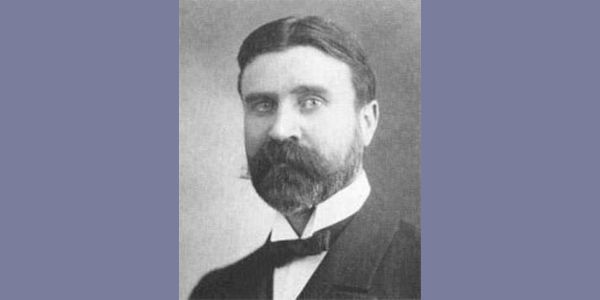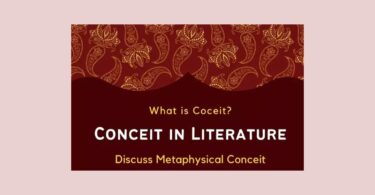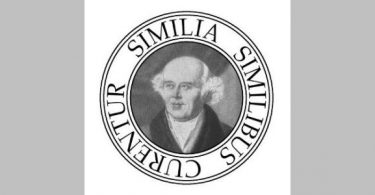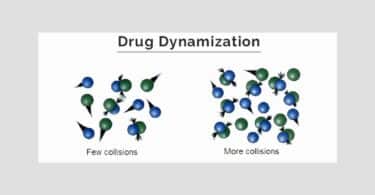In paragraph 153 of The Organon, Hahnemann says that in comparing the collective symptoms of the natural disease with drug symptoms for the purpose of finding the specific curative remedy, “the more striking, singular, uncommon and peculiar (characteristic) signs and symptoms of the case are chiefly and almost solely to be kept in view; for it is more particularly these that very similar ones in the list of symptoms of the selected medicine must correspond to, in order to constitute it the most suitable for effecting the cure. The more general (common) and undefined symptoms; loss of appetite, headache, debility, etc., demand but little attention when of that vague and indefinite character, if they cannot be more accurately described, as symptoms of such a general nature are observed in almost every disease and drug.”
This seems a sufficiently clear description of what Hahnemann meant by “characteristic” symptoms; and yet the term has been the subject of much discussion and many have differed as to what constitutes a “characteristic.” Confusion arose and still exists through the inability on the part of many to reconcile the teaching of this paragraph with the apparently conflicting doctrine of The Totality of the Symptoms as the only basis of a true homœopathic prescription. These have taken refuge either in the mechanical “symptom covering” already referred to, as fulfilling their conception of the “totality” or in what is knows as “keynote prescribing,” which, as they practice it, means prescribing on some single symptom which they (perhaps whimsically) regard as the “keynote” of the case.
The fundamental mistake here has been in the failure to distinguish between the numerical totality and the related or logical totality, as already explained. Both of these misapprehensions should be recognized and corrected.
The real “keynote system,” as taught and practiced by the late Dr. Henry N. Guernsey (but perverted by many) does not conflict with the doctrine of the totality of the symptoms, nor does it fall short of complying with Hahnemann’s injunction to pay most attention to the peculiar and characteristic symptoms of the case. It is, in fact, strictly Hahnemannian. The truth is that Dr. Guernsey simply invented a new name for the old Hahnemannian idea. A synopsis of Dr. Guernsey’s keynote method will be of value in this connection.
The term “keynote” is merely suggestive as used in this connection. The reference being to the analogy between materia medica and music. This analogy is shown in the use of other musical terms in medicine, as when the patient speaks of being “out of tune,” or the physician speaks of the “‘tone” of the organism. Disease is correctly defined as a loss of harmony in function and sensation.
The keynote in music is defined as “the fundamental note or tone of which the whole piece is accommodated.” In pathology the term “pathognomonic symptom” expresses what might be called the keynote of the disease, or that which differentiates it from other diseases of a similar character.
In comparing the symptoms of medicines we find that each medicine presents peculiar differences from all other medicines. These differences by which one remedy is distinguished from another, are the “keynotes” of the remedy, according to Dr. Guernsey.
It does not mean that the keynote of the case alone is to be met by the keynote of the remedy alone and that the other features of the case or remedy are to be ignored. The keynote is simply the predominating symptom or feature which directs attention to the totality. Its function is merely suggestive. A prescription is not based upon a keynote, considered as one symptom, no matter how “peculiar” it may seem. Its utility lies in this: that when the prescriber has become familiar with these “keynotes” or “characteristics” of remedies he will be able more quickly to find the remedy in a given case because the field of selection has been narrowed. When he recognizes such a keynote in the symptoms of a case it suggests or recalls to mind a medicine, or medicines, having a similar keynote. Reference to the repertory and materia medica will verify and complete the comparison. There is usually something peculiar in the case, some prominent feature or striking combination of symptoms that directs the attention to a certain drug, and this is what Dr. Guernsey called a keynote.
The misunderstanding and abuse of this method has caused it to fall somewhat into discredit. But considering Guernsey’s “keynotes” and Hahnemann’s “characteristics” as synonymous terms, which they are, and making legitimate use of Guernsey’s method, it has value.
A characteristic or keynote symptom is a generalization drawn from the particular symptoms by logical deduction. Evidently the characteristic or peculiar symptoms of a case cannot be determined until a complete examination has elicited all the symptoms of the case (the numerical totality) for purposes of comparison. This having been done there are various ways of selecting the characteristic.
Dr. Adolph Lippe illustrated his method in this way: “In many cases,” he says, “the characteristic symptoms will consist in the result obtained by deducting all the symptoms generally pertaining to the disease with which the patient suffers, from those elicited by a thorough examination of the case.” In other words the characteristic symptoms are the symptoms peculiar to the individual patient, rather than the symptoms common to the disease.
He illustrated this by a case, as follows: The patient was attacked by cholera. All the characteristic symptoms of cholera were present; but in this individual case there was (1) an unusual noise in the intestines, as if a fluid were being emptied out of a bottle. (2) The discharge came away with a gush. Of what pathological value these symptoms were we know not. Still they formed part of the totality which we must cover. Deducting from the (numerical) totality of the symptoms those common to the disease, we were in possession of the characteristic symptoms of the patient.
“We found that those two symptoms are also characteristic of Jatropha Curcas, and that this remedy, at the same time, has caused symptoms corresponding with the general pathological condition.” Jatropha promptly cured the case.
The selection of a curative remedy in this case, therefore, was governed by two symptoms of no known pathological value, and of seemingly trifling character. Yet these two symptoms were what gave the case its individuality, and unerringly pointed out the curative remedy.
This case is a beautiful example of the kind of work for which Dr. Lippe was famous. It illustrates the necessity of being familiar with the natural history, symptomatology and diagnosis of disease. Dr. Lippe could not have decided that these two symptoms were peculiar and characteristic if he had been unfamiliar with the symptoms of cholera. Neither could he have selected these two symptoms as peculiar if he had not had the rest of the symptoms before him for comparison. The mistake of arbitrarily picking out some “freak” symptom, and giving a remedy which has a corresponding symptom, should be avoided. Dr. Guernsey did not teach prescribing on a single symptom.
In the preface to the first edition of his great work on Obstetrics Dr. Guernsey presents the subject of “keynote prescribing” in another way. He says: The plan of treatment may seem to some rather novel, and perhaps on its first view, objectionable, inasmuch as it may seem like prescribing for single symptoms, whereas such is not the fact. It is only meant to state some strong characteristic symptom, which will often be found the governing symptom, and on referring to the Symptomen Codex or Materia Medica all the others will be there if this one is.
“There must be a head to everything; so in symptomatology; if the most interior or peculiar symptom, or keynote, is discernible, it will (usually) be found that all the other symptoms of the case will be also found under that remedy which produces this peculiar one, if the remedy be well proven. It will be necessary, in order to prescribe, efficiently, to discover in every case that which characterizes one remedy above another in every combination of symptoms that exist. There is certainly that in every, case of illness which pre-eminently characterizes that case, or causes it to differ from every other. So in the remedy to be selected, there is and must be a peculiar combination of symptoms, a characteristic or keynote. Strike that and all the others are easily touched, attuned or sounded. There is only one keynote to any piece of music, however complicated, and that note governs all the others in the various parts, no matter how many variations, trills, accompaniments, etc.”
If it is understood that the “keynote” to a case may and often does exist in, or consist of, a “peculiar combination,” as Dr. Guernsey puts it, and that it is not merely some peculiar, single, possibly incomplete symptom which the tyro is always mistakenly looking for, the subject is cleared of part of its obscurity. Dr. Guernsey might have summed up the whole matter in one word-Generalization, which ha a been discussed at length in the chapters on the logic of homœopathy.
Dr. Lippe, discussing characteristic symptoms, wrote as follows: “When medicines are submitted- to provings upon the healthy they develop a variety of symptoms in a variety of provers. Each prover has his own peculiar, characteristic individuality affected by the medicine in a peculiar, manner; other differently constituted individuals experience different, yet similar, peculiar symptoms from the same medicine. There is a similarity and a difference evident upon close comparison. In like manner diseases and all other external influences affect different individualities differently, yet similarly. The physiological school and its followers accept in disease only what is general (common) to all those affected by it; in medicinal provings in the same manner they accept only that which has been experienced alike by many. In both cases they simply (sic) generalize. The homœopathic school reverses this order. Accepting all the symptoms experienced by the differently constituted provers, they consider as peculiarly characteristic the individual symptoms of the patient; those not generally experienced by others suffering from a similar form of disease.”
This is individualizing with a vengeance! In aspersing the process of what he calls generalizing Dr. Lippe traduces the very instrument he is apparently unconsciously using, but misusing the word. One is the traditional pathological-diagnostic method based upon an arbitrary and artificial classification of only the common or gross phenomena of disease; the other is the homœopathic natural or inductive method of modern science, based upon all the phenomena of the case, but paying particular attention to the uncommon and peculiar features, never forgetting that we always have an individual patient to treat and cure.
Dr. P. P. Wells says: “Characteristic symptoms are those which individualize both the disease and the drug. That which distinguishes the individual case of disease to be treated from other members of its class is to find its resemblance among those effects of the drug which distinguish it from other drugs. This is what we mean when we say that with these the law of cure has chiefly to do. When we say ‘like cures like’ this is the ‘like’ we mean.”
Characteristics may sometimes be symptoms observed only as a result of the closest scrutiny, like the apparently trifling clues in a mysterious murder case which the ordinary detective overlooks or ignores, but which a Sherlock Holmes pounces upon and utilizes with amazing logical acumen to clear up what is otherwise impossible of solution. Their value depends upon who is using them. An Agassiz or a Leidy, placed in possession of a fragment of bone, or the scale of a fish, found in the remains of some pre-glacial geologic period, will reconstruct for us not only the animal or fish from which it came, but unfold a whole chapter of natural history, picture the scene and repeople a forgotten period of earth’s history before our delighted eyes.
Dr. Charles G. Raue pointed out that scarcely one of the “keynotes” or characteristic symptoms belongs exclusively to a single remedy, and cautioned us not to diagnose a remedy on one symptom only, be it ever so characteristic. “While in some cases,” he says, “it may point exactly to the remedy, it cannot do so in every case as it is not rational to suppose that the whole sphere of action of a remedy, which is often extensive and complex, should find its unerring expression and indication in one symptom. But such characteristics are of great aid in the selection of the remedy, as they define the circle of remedies out of which we must select.”
Dr. Hering, in his quaint fashion, years before the “keynote system” was ever heard of, said: “Every stool must have at least three legs, if it is to stand alone.” He advised selecting at least three characteristic symptoms as the basis of prescribing.
A milking stool will stand upon one leg-if you sit on it and thus provide your own two legs as the other necessary props; but even then, as every farmer’s boy knows by bitter experience, a vicious kick, or a “corkscrew swat” from the old cow’s tail may upset the youthful milker and his pail of milk and bring him to grief.
So it is wise to always give the symptomatic milk-stool as broad a base and as many legs as possible. The youthful prescriber will get many a vicious kick from refractory cases. He may be knocked sprawling and lose his pail of milk a few times, but he will be able to avoid this when he has learned the peculiarities of his patient as well as I learned the peculiarities of my bovine kicker when I was a boy.
The Totality is an ideal not always to be realized. As a matter of fact, in practical experience, it is often impossible to complete every symptom, or even a large part of the symptoms. Patients have not observed, or cannot state all these points. They will give fragments; the location of a sensation which they cannot describe, or a sensation which they cannot locate; or they wilt give a sensation, properly located, but without being able, through ignorance, stupidity, failure to observe or forgetfulness, to state the conditions of time and circumstances under which it appeared. Sometimes no amount of questioning will succeed in bringing out the missing elements of some of the symptoms.
What is to be done under such circumstances? Make a guess at the remedy? Give two or three remedies, in alternation? Give a combination tablet? Or “dope” the patient with quinine or morphine? Rather than do any of these things, follow the advice of my old preceptor, Dr. P. P. Wells. Sometimes, when I approached him with a difficult case, he would assume a quizzical expression and ask, “Don’t you know what to do?” On being answered in the negative he would say, “if you don’t know what to do, do nothing – until you do know;” emphasizing the injunction with a characteristic downward stroke of his right forefinger. Then he would go over the case and show what should be done and how to do it.
It was he who taught me Bœnninghausen’s method of dealing with such cases. And I thought the more of it because he had known Bœnninghausen and had received instruction and treatment from the Grand Old Man personally, while traveling in Europe.
From: Stuart Close, The Genius of Homeopathy, Lectures and Essays on Homeopathic Philosophy





